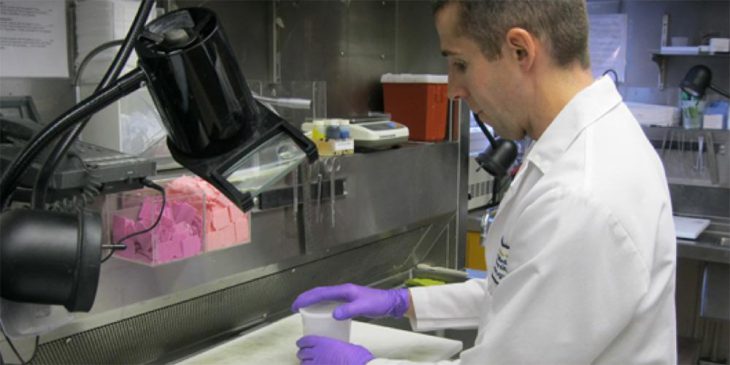Prostate cancer is a non-fatal form of uncontrolled cellular growth that starts within the prostate gland, part of the male reproductive system. As prostate cancer tends to not present any major symptoms until the late stages of the disease, it can commonly go undiagnosed throughout its early stages. This type of “silent” prostate cancer is called latent.
It is difficult to obtain data on the normal course of early prostate cancer in humans. In the past, researchers have tried to obtain data about early prostate cancer by observing medical autopsies. However, these autopsies were done on patients who had extensive treatment prior to their deaths, which could have altered the course of any latent prostate cancer found. If researchers could accurately determine the prevalence of latent prostate cancer, the scientific community could then use these findings to better understand prostate cancer in its early stages in humans.
The previous research on diagnosing latent prostate cancer has only focused on what has been learned from medical-type autopsies.To circumvent these shortcomings, a recent study conducted by researchers in Japan examined cases of latent prostate cancer via the use of forensic autopsies. Patients receive forensic autopsies if their death was sudden, and not due to an additional disease or complication. This is important since sudden death generally means that there were no other medical interventions at play during the ending stages of the patient’s life.
The samples of deceased patients’ prostate glands were obtained from the Dokkyo Medical University in the Tochigi Prefecture of Japan between November 2004 and February 2014. Only cadavers from male patients over the age of ten, where the tissue was not excessively damaged due to pelvic trauma or decomposition, were used for further analysis. This narrowed the sample size down to 325 available cases.
The medical history of each patient was reviewed to ensure there were no other complications or diseases that could complicate the results, and a full-body examination was performed on each patient. The prostate gland itself was individually examined by the pathologist in the study and given a score, called the Gleason score. The Gleason score is a scale from 2 to 10 that describes how advanced a tumor is, where “2” represents the least developed and “10” represents the most.
Then, the researchers compared their own findings to the patient’s medical history for cause of death and any other form of cancer present. Finally, they compared the rates of latent prostate cancer observed in the forensic autopsies between those patients who did have cancer and those who did not.
Overall, there were 317 patients analyzed for this study; eight of the original 325 were excluded because of damaged tissue. Of the 317, 125 patients had died suddenly of disease, not necessarily cancer, and 192 had died from external, non-illness causes. Latent prostate cancer was identified in 45, or 14.2% of cases. These 45 cases ranged in age from 27-93 years old.
In an analysis of the latent prostate cancer cases by age group, cases were most common among deceased patients older than 80 years old. The remaining prevalence of latent prostate cancer is as follows; individuals in their 70’s (34% of cases), in their 60’s (20% of cases), and their 40’s (6.7% of cases). Overall, cases of latent prostate cancer in deceased patients older than 49 years was 19.2%.
Researchers found that the frequency of latent prostate cancer via the use of forensic autopsy was similar in the deceased patients, regardless of their cause of death. Forensic autopsies in this sample detected more latent cancer than is typical for medical autopsies. Therefore, the researchers conclude that the use of forensic autopsies is useful for detecting latent prostate cancer and may be more accurate than using medical autopsies. This new method improves our understanding of the prevalence of prostate cancer in the population, latent or otherwise, by helping researchers gather more accurate data from the deceased. It is also a step towards new ways of diagnosing hidden cancers in the living.


